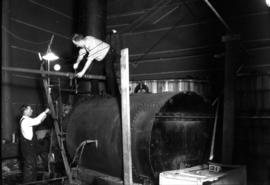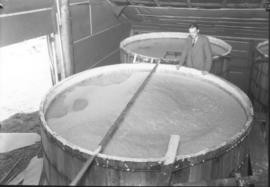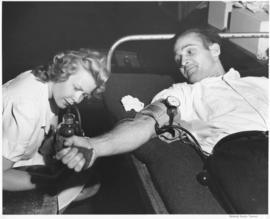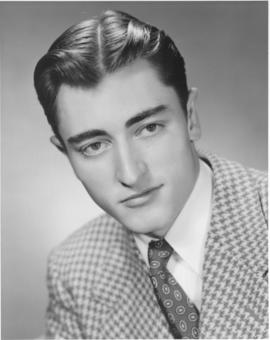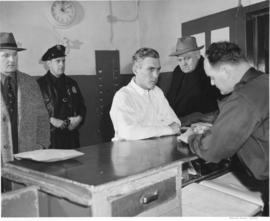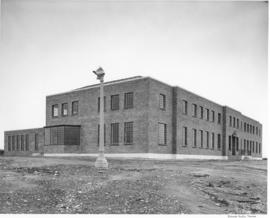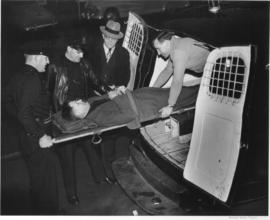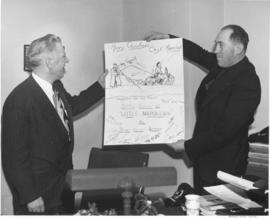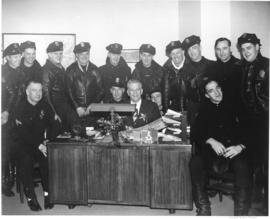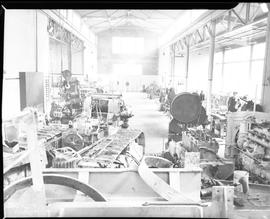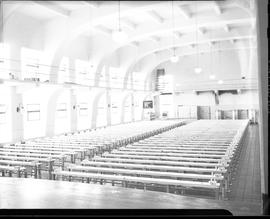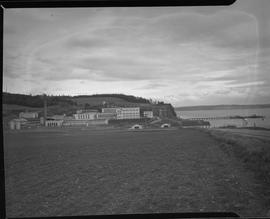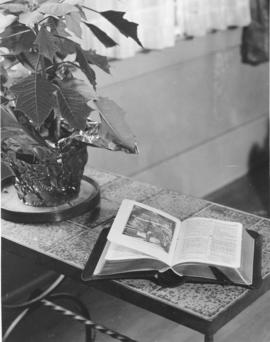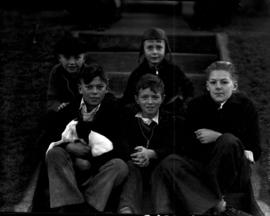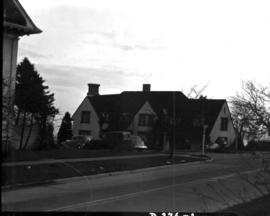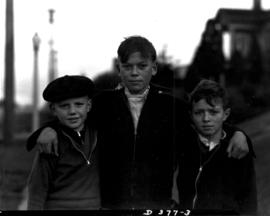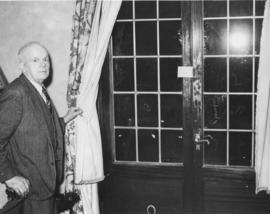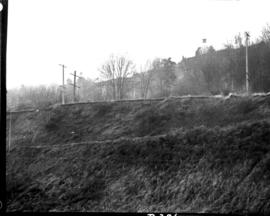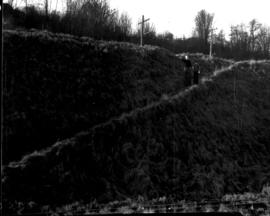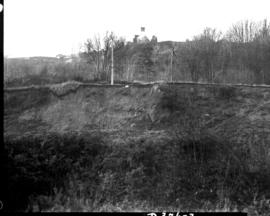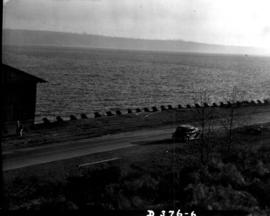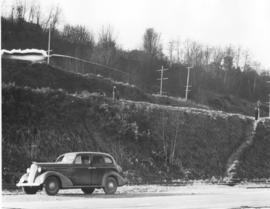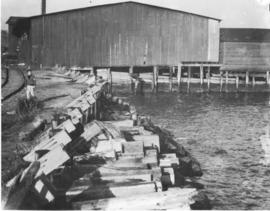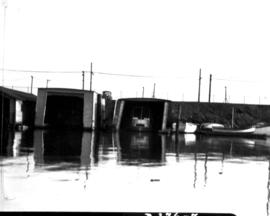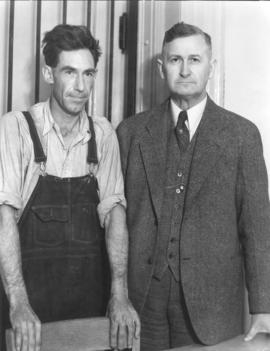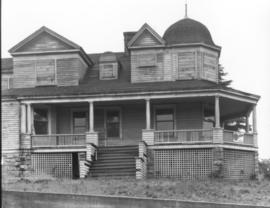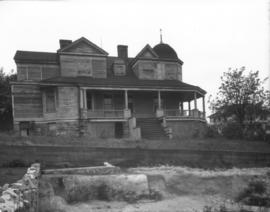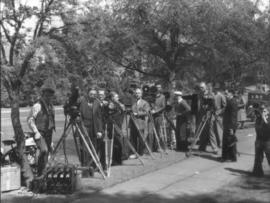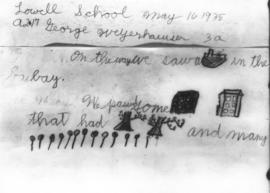- Item
- 1931-07-17
Part of General Photograph Collection
Two men believed to be Federal Prohibition agents worked on July 17, 1931, at dismantling the boiler from the still found in the barn at a Graham, Washington, farm. The illegal operation was as modern and complete as a commercial pre-Prohibition distillery. It was estimated to have been built for $50,000, was in clear view of the highway and operated for six months. The owner of the farm, a Pierce County road district employee, maintained that he rented out the barn and was not aware of the illegal activities. In fact, this location was probably chosen in part due to the respectability that the farmer lent to the operation. In an odd twist of fate, the bootleggers were preparing to abandon the still, or dismantle and move it, and were making their last batch when the raid was made. It is estimated that the operators manufactured over a 1/2 million dollars of alcohol before the still was shut down. 52,000 gallons of mash were seized in the raid. (TNT 7/17-19, 1931, pg. 1-various articles)
Prohibition--Graham; Stills (Distilleries); Police raids--Graham;
